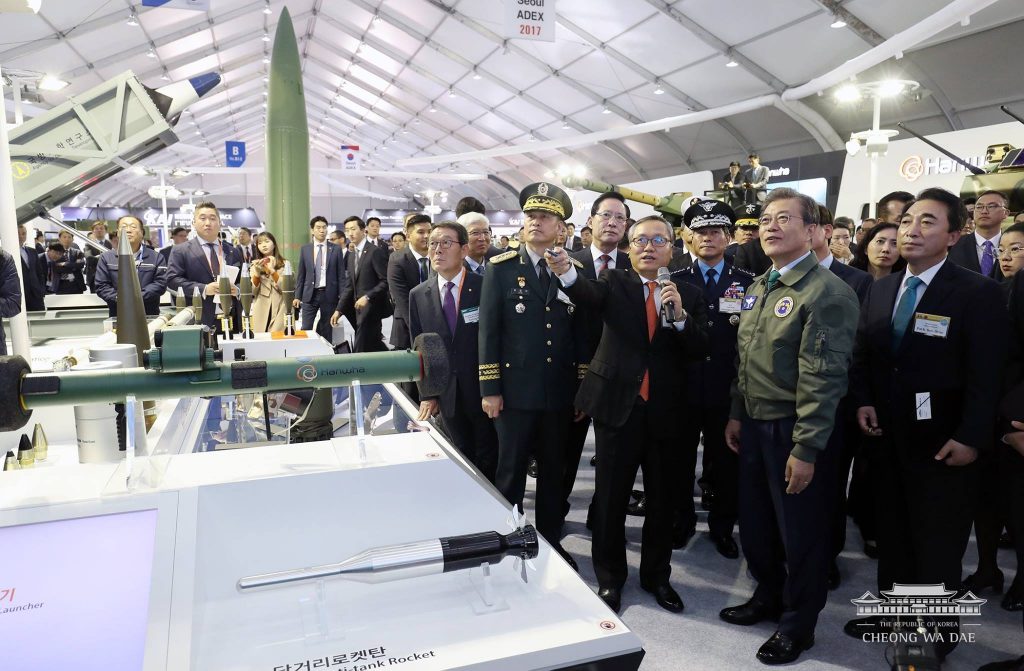
ASEAN’S Relief From Disaster?
February 5, 2010
Revolutionizing Taiwan’s Security: Leveraging C4ISR for traditional and non-traditional challenges
February 19, 2010By: Project 2049 Institute |
South Korea’s arms industry is going global. Within just the last few months, Seoul has held a grand International Aerospace and Defense Exhibition (ADEX) boasting 273 defense agencies from 27 nations, boosted its exports of patrol vessels to Kazakhstan, and delivered eight ground attack aircraft to Peru.
The moves are part of an all out government-led effort to market indigenous weapons systems abroad and make the arms industry a key engine of economic growth. Seoul wants to sell three billion dollars worth of arms and become one of the world’s top ten arms exporters by 2012. They are also a product of the country’s broader defense modernization program – Defense Reform 2020 – which aims to create a slimmer, stronger and high-tech army by that year. As South Korea acquires more advanced systems, it will look for places to sell off its older ones.
The campaign has been quite successful thus far. Since the defense reform plan was formulated in 2005, Seoul has streamlined its arms acquisitions process, supported small domestic firms to help them enter the arms market, and increased its arms sales to Africa and Latin America. And according to the latest statistics, South Korean defense exports in 2009 jumped 13 percent to a record high 1.17 billion dollars, despite the effects of the global financial crisis.
Future prospects, however, appear more mixed. On the one hand, South Korean products are and will continue to be competitive in the global market because of their edge in both technology and price. Seoul’s K-11 airburst assault rifle is drawing much attention as the world’s first multipurpose rifle in production, while its K-21 next-generation infantry vehicle can supposedly outperform the U.S. Army’s equivalent.
Whether South Korea can sustain this feverish pace of defense modernization is another question altogether. Lackluster economic growth could scale down Seoul’s grand ambitions. As it is, the country has been forced to cut back on its arms plans as GDP rose by over 4 percent over the last few years, instead of the 7.1 percent yearly increase envisioned by the defense reform package until 2020.
Bureaucratic and political hurdles could also be formidable. The army has fiercely resisted manpower cutbacks envisioned in Defense Reform 2020, and will probably continue to do so. Much will also depend on who is in power. Under a future conservative administration, such as that of South Korean President Lee Myung-bak, Seoul may view North Korea as more threatening, thus increasing the need for greater ground forces and reducing the pace of force reduction and defense modernization (as has been the case over the past few years).
Regardless of these obstacles, however, one can expect to hear much more about South Korean arms on the international market in the near future.
South Korea’s arms industry is going global. Within just the last few months, Seoul has held a grand International Aerospace and Defense Exhibition (ADEX) boasting 273 defense agencies from 27 nations, boosted its exports of patrol vessels to Kazakhstan, and delivered eight ground attack aircraft to Peru.
The moves are part of an all out government-led effort to market indigenous weapons systems abroad and make the arms industry a key engine of economic growth. Seoul wants to sell three billion dollars worth of arms and become one of the world’s top ten arms exporters by 2012. They are also a product of the country’s broader defense modernization program – Defense Reform 2020 – which aims to create a slimmer, stronger and high-tech army by that year. As South Korea acquires more advanced systems, it will look for places to sell off its older ones.
The campaign has been quite successful thus far. Since the defense reform plan was formulated in 2005, Seoul has streamlined its arms acquisitions process, supported small domestic firms to help them enter the arms market, and increased its arms sales to Africa and Latin America. And according to the latest statistics, South Korean defense exports in 2009 jumped 13 percent to a record high 1.17 billion dollars, despite the effects of the global financial crisis.
Future prospects, however, appear more mixed. On the one hand, South Korean products are and will continue to be competitive in the global market because of their edge in both technology and price. Seoul’s K-11 airburst assault rifle is drawing much attention as the world’s first multipurpose rifle in production, while its K-21 next-generation infantry vehicle can supposedly outperform the U.S. Army’s equivalent.
Whether South Korea can sustain this feverish pace of defense modernization is another question altogether. Lackluster economic growth could scale down Seoul’s grand ambitions. As it is, the country has been forced to cut back on its arms plans as GDP rose by over 4 percent over the last few years, instead of the 7.1 percent yearly increase envisioned by the defense reform package until 2020.
Bureaucratic and political hurdles could also be formidable. The army has fiercely resisted manpower cutbacks envisioned in Defense Reform 2020, and will probably continue to do so. Much will also depend on who is in power. Under a future conservative administration, such as that of South Korean President Lee Myung-bak, Seoul may view North Korea as more threatening, thus increasing the need for greater ground forces and reducing the pace of force reduction and defense modernization (as has been the case over the past few years).
Regardless of these obstacles, however, one can expect to hear much more about South Korean arms on the international market in the near future.




